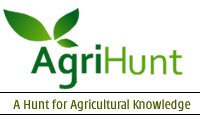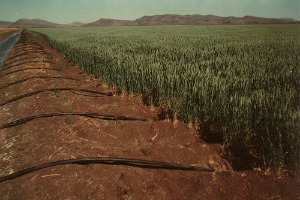By Janet Patton — jpatton1@herald-leader.com
At least one in nine jobs — almost 17,000 — in Fayette County is tied somehow to agriculture, according to a new study by researchers at the University of Kentucky College of Agriculture.
The Fayette County agricultural business cluster generates $2.4 billion annually in revenue, and more than $73 million in state and local taxes, UK researchers found. There also are an additional $1.32 billion in other income, profits and dividends associated with the ag cluster.
This economic effect is much broader than previously assumed, in part because the survey looked beyond the farm to businesses that depend on farms, said Scott Smith, UK agriculture dean.
"I think the study is new and important because it defines agriculture in a broader and more meaningful way, not just through on-farm employment or farm-gate receipts," Smith said.
Researchers noted that their estimates are conservative, that there are many more businesses in Fayette County that have a percentage of their income tied to farms, such as accountants who do some farm-related taxes.
"We looked at those businesses that are entirely ag-dependent," Smith said. "Vet clinics are a great example. ... There are 200 of the world's best equine veterinarians here."
The equine sector is a big factor.
At least 15 recreational establishments, $88 million in additional annual payroll in three industries and $74 million in additional recreational sales are attributed to the presence of racetracks in the county.
The new survey numbers do not take into account the full tourism impact of Keeneland and the Kentucky Horse Park.
Agricultural sales in Fayette County are dominated by the horse sales and they impact hospitality, recreation, finance, real estate, professional services and retail trade as well.
A 10 percent increase in horse sales likely would result in 10 additional businesses in those sectors, $6 million in new payroll in professional services and $45 million in new sales in professional services, real estate and retail industries, the study found.
"The analysis quantifies how important Fayette County's distinctive brand is to major components of the local economy," the researchers concluded. "Agriculture imports wealth into Fayette County that is spent locally by industry participants and visitors."
Agriculture Commissioner James Comer hailed the study as more evidence of the economic importance of agriculture to Kentucky.
"Equine is our signature agriculture industry," he said. "The report showed that if we increased sales by 10 percent how much of a ripple effect that would have for Fayette County. I think that could be seen for beef cattle, for corn, for soybeans, for all of agriculture. ... Any time we increase production agriculture, it's going to have major effects on banks, on real estate, on housing and other sectors."
Comer said he hopes that the state General Assembly and Gov. Steve Beshear will see the research as more evidence that the equine industry should receive economic help.
Although other sectors of agriculture have flourished in recent years, Comer said, "equine continues to decline. And we need to work closely with the equine industry to reverse that trend for all breeds."
He said that lifting the sales tax on horse farm purchases and putting expanded gambling on the ballot are two possibilities.
"Our breeders' incentive fund isn't funded at the same levels as other states, and we need to examine what other states are doing and see how we can have more money in our breeders' incentive fund," Comer said. Many states with casinos or slots at tracks use the revenue to boost purses and breeders' funds.
"Let the people of Kentucky read these economic impact reports and let the people decide" on gambling, Comer said.
The study, funded by the Fayette County Kentucky Farm Bureau, particularly noted the potential impact of lost farmland: A decline of 10 percent, or $41 million, in production agriculture likely would result in an additional decrease of $26 million in other output, the study found.
"Fayette County has a diversified economy, and we wanted to get a better understanding of agriculture's role in it," said Todd Clark, past president of Fayette County Farm Bureau. "This project contains some important data that can be used to raise awareness and promote discussion of the agriculture clutter's importance to the county."
According to the study, the analysis was motivated by ongoing policy debates.
"Current policies preserve farmland at public expense, and discourage sprawl by restricting land use," the study noted. "Related debate exists about economic development priorities: Should the county attempt to lure manufacturing firms, or capitalize on its brand as the 'Horse Capital of the World'?"
Based on the analysis, policies designed to promote manufacturing would have fewer benefits in other local industries than agriculture gains would have.
The benefits go beyond the horse farm.
"Fayette County and local businesses have invested in a vibrant, entrepreneurial local food and entertainment industry," researchers found, citing the Lexington Farmers Market, named on of the top large farmers markets in the country by the American Farmland Trust.
"The addition of downtown businesses such as West Sixth Brewing, Shorty's Grocery, FoodChain Urban Farm, Country Boy Brewing, Town Branch Distillery and several new restaurants and bars in the area near Cheapside Park are all linked by a distinctive local character that blurs the lines of the agricultural, hospitality and recreation industries," the study found.
"Agriculture alone does not create Fayette County's unique image; it is the combination of the visual amenities of its farms; the glamour of its equine events, and the deep cultural history evident throughout the area. Bourbon distilling, originally a way to preserve the value of corn in an easily transported form, blends well with Fayette County's agricultural and equine heritage, strengthening the area's appeal to visitors and residents alike."
Leigh Maynard, one of the study's authors, said that their research reveals the true depth of agriculture's influence on Fayette County's urban economy.
"The important role of agriculture needs to be accounted for in policy discussions," Maynard said. "The linkages are so intertwined in Fayette County's diverse economy. ... If you do replace farmland with some other use, that replacement doesn't come cheap. It really is affecting the brand."

















